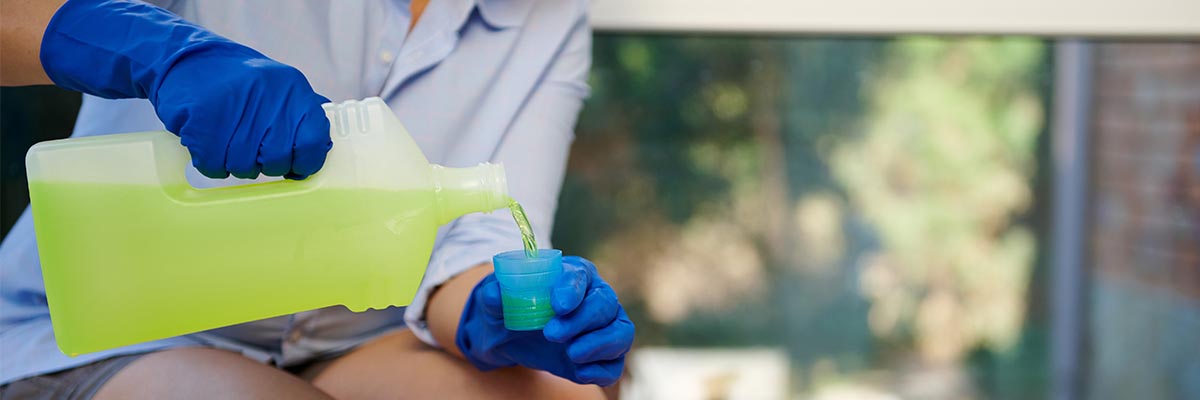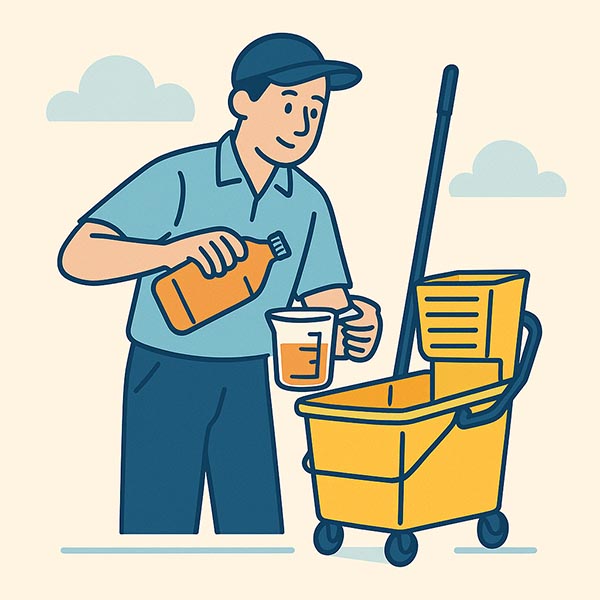Calculate and Compare: Interactive Tool for Cost Per Diluted Gallon
In the world of facility maintenance, every dollar counts. When evaluating cleaning products, focusing only on the purchase price can lead to misleading comparisons. The real measure of value comes from understanding cost per diluted gallon, a metric that reveals the true cost of a ready-to-use solution once it’s mixed to the manufacturer’s recommended dilution rate.

Later in this article, we’ve embedded a tool you can use to easily make these calculations and compare two products. Bookmark this page for future use.
The Importance of Knowing the True Cost
Many cleaning chemicals are designed to be diluted with water before use. Two products may have the same purchase price, but if one requires twice as much product to make a usable solution, its true cost of use is significantly higher.
Calculating cost per diluted gallon allows facility managers to:
- Compare products accurately. Evaluate the real cost of performance, not just what’s on the invoice.
- Manage budgets effectively. Small differences in dilution rates can have major impacts across large facilities.

How to Calculate Cost per Diluted Gallon
The formula is straightforward once you know three pieces of information:
- The size of the concentrate container
- The purchase cost per container
- The recommended dilution ratio
Step 1: Convert the Container Size to Gallons
Make sure all measurements are in gallons before calculating. Use these quick conversions:
- 1 gallon = 128 fl oz = 4 quarts = 3.785 liters
If your product lists ounces, divide by 128 to get gallons.
Example: 64 oz ÷ 128 = 0.5 gallons.
If listed in liters, multiply by 0.264.
Example: 5 L × 0.264 = 1.32 gallons.
Step 2: Review the Label to Find the Dilution Ratio
The dilution ratio tells you how much water to mix with the concentrate and is usually listed on the product label. Often, dilution ratios are written in ounces per gallon. Occasionally, they are written as 1:X, meaning one part chemical to X parts water (for example, 1:64). If only 1:X is given as a dilution ratio, divide 128 by X to get the ounces per gallon. Example: 1:64 is (128/64) = 2 ounces per gallon.
Many cleaning products list more than one dilution ratio depending on the task. For instance, a cleaning solution might call for 1:128 for routine cleaning but 1:20 for heavy soil or deodorizing. Always use the ratio that matches your specific application to ensure proper performance, safety, and accurate cost calculations.
Step 3: Calculate the Total Ready-to-Use Gallons (Yield)
The total ready-to-use gallons, also called the yield, show how much usable cleaning solution you get after diluting the concentrate according to the product directions. Yield helps determine how far a product will go and is key to calculating the true cost of use.
To find the yield, multiply the container size (in gallons) by the total number of parts in the dilution ratio, including both the chemical and the water.
If you know Ounces Per Gallon
Yield = Container Size in Gallons * (1 + 128 / Ounces Per Gallon)
Example
A two gallon container is diluted at 3 ounces per gallon
So:
Yield = 2.0 gallons x (1 + 128 / 3) = 87.3 gallons of Ready-To-Use solution.
If you know 1:X
Yield = Container Size in Gallons × (1 + Dilution Ratio)
Example
A half-gallon container diluted at 1:128 (One part concentrate plus 128 parts water, or 129 total parts.)
So:
Yield = 0.5 gallons × (1 + 128) = 0.5 × 129 = 64.5 gallons of Ready-To-Use solution.
Step 4: Divide Cost by Total Ready-to-Use Gallons
Cost per Diluted Gallon = Container Cost ÷ Total Ready-to-Use Gallons
Example
A 1-gallon container costs $25 and is diluted at 1:64.
Total ready-to-use gallons = 1 × (1 + 64) = 65 gallons.
Cost per diluted gallon = $25 ÷ 65 = $0.38 per diluted gallon.
Hillyard Can Help You Make Informed Decisions
Calculating cost per diluted gallon is a small step that produces major insights. It allows facility professionals to compare products apples to apples and maintain consistent cleaning performance.
Hillyard has experts throughout the United States who can help you understand and lower your true total cleaning cost. That’s the key to smarter spending and cleaner, safer facilities. Use the “I’m Interested” form below, and one of our representatives will contact you.